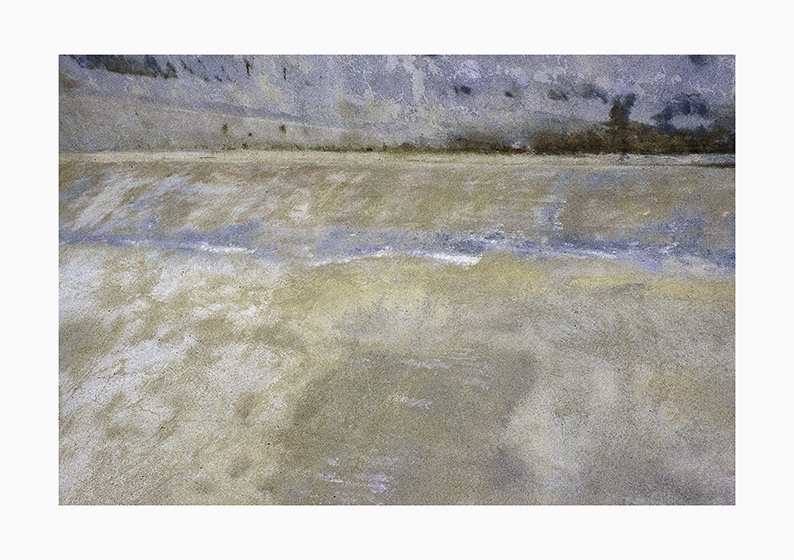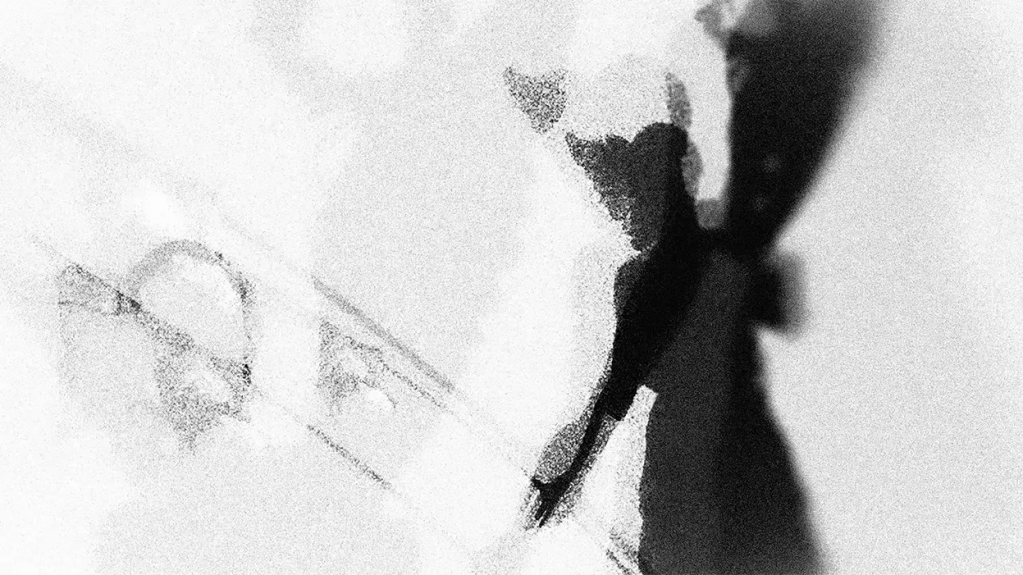
Don Siegel’s 1956 science-fiction film, Invasion Of The Body-Snatchers is one of my favourite things. Here’s why.
I can’t recall when I first saw Invasion Of The Body-Snatchers – most likely on BBC2, opposite the six o clock news, when I was nine or ten, which was where, and when, they always scheduled science-fiction b-movies, as a welcome refuge for boys like me; from the Falklands War, the miners’ strike, the spectre of nuclear annihilation, and Margaret fucking Thatcher.
I wonder if, to begin with, I was a bit underwhelmed by Invasion of the Body-Snatchers, in that it lacked the giant slugs of It Came From Outer Space, the big-brained mutant of This Island Earth, and the tentacled-head-in-a-fishbowl from Invaders From Mars. I’m going to say it probably did. I can also say with confidence that, unlike those showier movies, Invasion of the Body-Snatchers changed my relationship to cinema forever.
But it wasn’t the experience of watching Invasion of the Body-Snatchers that catalysed my transformation from consumer of images to avid cryptographist. It was the experience of reading about it. As my interest in horror and science fiction films intensified, I started to spend my pocket money on books about them, principally because I could seek out glimpses of the many and various films I was otherwise too young to actually watch. And while Invasion of the Body-Snatchers certainly lacked the rubbery bug-eyed delights and flying saucers I thought sure were the canonical stuff of all the most entertaining science-fiction movies, it was a film the people in my books liked to write about a lot.
This was what I learned: in addition to Invasion of the Body-Snatchers being a low budget black and white film about hive-minded pod people from another planet and their sinister bid for world domination, it was also a commentary on the anxiety felt by Americans in the face of communist ideology. Okay, so, I didn’t know what communism was, even less so ideology, except that it had to something to with Russian spies and the colour red.
Confusingly, as I read more about Invasion of the Body-Snatchers, I learned the film might also have something to say, not about communism, but about McCarthyism, which was another word I didn’t know, but learned about soon after. Further readings, in different books, suggested the threat against mankind in Invasion of the Body-Snatchers wasn’t coming from the furthest flung regions of space, but from within the magazine pages of Homes & Garden; that the awful sameness spreading from person-to-person wasn’t communism, or the chilling effect on expressions of difference produced by Senator Joseph McCarthy’s pernicious witchhunts, but the homogenising effect on the human condition of jolly, post-war consumerism.
I’m reminded of the old joke: when is a door not a door? When it is a jar. When is a film not a series of images projected at twenty-four frames a second onto a flat surface? When it is an expansive, dimensional vessel encompassing competing strains of sociological meaning.
Though I didn’t really understand everything I was reading about in relationship to Invasion of the Body-Snatchers, a lesson was learned, and it was two-fold; not only could black and white movies about imperialistic alien vegetables tell us something truthful about the emotional realities of individuals living in the real world, but also that interpretation was not the intellectual project of fixing meaning in place, but the art of enjoying competing truths.
As improbable as it sounds pretentious, I really can trace my intellectual awakening to Invasion of the Body-Snatchers; from here, the early beginnings of my understanding of politics, the scaffolding of our lived realities, largely invisible to children, but very far from irrelevant to them; from here, the beginning of an understanding about the various different ways our freedoms might be imperilled – from within and from without; from here, the idea a person’s difference could be considered precious, a characteristic to be protected; from here, the tingle of unease for any large group of people laying definitive claims to a single mode of existence.
Invasion of the Body-Snatchers also taught me films were unavoidably articles of social history, that however future-looking or historical or interplanetary, movies are marinaded in the times of their production; that the surface of a film is a mirror, in which we find the values of the people who made it.
In this way, Invasion of the Body-Snatchers gave me the confidence and conviction to spit in the eye of various teachers and later, academics, who would have me and others believe there was no value in something as popular as genre, no truth-telling power, no insight; that the only culture with the power to cast light on the matrices of human behaviour are those within the realm of finer things.

A boy runs from his mother, who is ‘not’ his mother.

Wilma is convinced Uncle Ira is ‘not’ Uncle Ira.

A doppelgänger is discovered as it assumes the form of its victim.

A doppelgänger transforms in the darkness of the cellar.
Invasion of the Body-Snatchers begins at the end; with our hero, Dr Miles Bennell, in custody in the emergency room of a hospital; wild-eyed, Bennell is trying to convince a psychiatrist he is not a lunatic, and so recounts the events leading up to his arrest.
And events begin simply enough: a boy running in mortal fear of his own mother. Soon after, we meet Wilma, cousin of Dr Bennell’s love interest, Becky Driscoll, who is convinced her Uncle Ira is ‘not’ her Uncle Ira. Meanwhile, the sun shines, and Uncle Ira cuts the grass on his neat front lawn, and the town of Santa Mira looks as pretty-as-picture, with its neat, white wooden houses, neat, white picket fences, and neat, white families. Oh, how these first small pangs of wrongness delight me, the chiming of these minor chords in an otherwise happy-clappy melody; the way they say, ‘What’s wrong with this picture?’, like watching the filter on someone’s #Livingmybestlife Instagram feed glitch-out for a second to reveal a stray dog turd.
Maybe cinema has conditioned me to regard small, pretty towns inhabited by smiling people as inherently dishonest and keepers of secrets? Maybe I only think this way because Invasion of the Body-Snatchers taught me to think this way, or maybe Invasion of the Body-Snatchers is the just outward expression of something I’ve always known to be true? We think of myths as stories, but I wonder if myths are the stories we recognise as truth? Santa Mira is but one of many small towns whose inhabitants are actually conspirators or monsters or both. I’m thinking of the leafy streets of Stepford, and the painted streets of Summerisle. I’m thinking about Seahaven Island, and the Village from The Prisoner, the ice-cream-coloured neighbourhood of Edward Scissorhands, and every other dystopic conurbation.
Anyway, we soon learn the boy’s teacher and Uncle Ira have been hollowed out by extra-terrestrials, who are making a tremendous effort to keep up appearances. I suppose this is what I’m talking about when I think about all those towns and villages that so inspire distrust in me, or the way another person’s exquisite manners give me reason to be wary of them; I think to myself ‘so much effort’ and then, ‘for what?’ and then, ‘why?’, and then ‘I think they doth protest too much’. I do know of people who ‘just want everything to be nice’ and they’re always the bloody worst of us, because in my experience ‘by nice’ what they really mean is ‘repressed’ and ‘silent’ and ‘servile’.


Dr Bennell and Becky look out at the ‘normal’ streets of Santa Mira.
Whenever I re-watch the unfolding horror of Invasion of the Body-Snatchers, I’m reminded of a warm evening spent with old friends around a table on the scruffy candle-lit terrace of an old French house. We were playing a hypothetical game of Room 101, nominating our least favourite things to be cast into Orwell’s oubliette. The conversation began lightly enough, and my suggestion for banishment was John Lennon’s Imagine. I loathe Imagine musically because it is a dirge, and also because, lyrically it is about as profound as a souvenir tea towel, as profound as The New Seeker’s I’d Like to Teach the World To Sing, only markedly less catchy. My choice confused my companions, and as we wrestled with it, the tone darkened. I railed against the glib utopianism Lennon offers, finding in it only the nascent trappings of fascism – and not Orwell’s dystopian hell hole of conspicuous boots brought down conspicuously on faces, but Huxley’s Brave New World of insensate, perfected bliss. Imagine is every pod person’s sing-a-long, a love-song to frontal lobotomies.

The discovery of the seed pods in the greenhouse.
I likewise relish Invasion of the Body-Snatchers for its hokier trappings, principally, its central premise that the human race might be victimised, then vanquished, by plants. Maybe like all small boys at one time or another, I had a venus-fly trap, having begged my mum to buy me one. I was instantly disappointed by the diminutive size of my fly-trap, and also disappointed when I killed mine after feeding it a single strand of frozen mince. The idea of carnivorous plants fascinated me – still do, and while the alien pods in Invasion of the Body-Snatchers do not predate on the flesh of their victims, they feed on us nonetheless, absorbing the likenesses of their subjects while their subjects sleep.
The film’s scenes in the greenhouse, in which our heroes witness the birthing of their dopplegangers from rubbery seed pods, remain gruesome all these years later, evoking a horrid fascination for prodigiousity familiar to any gardener. Recently, I’ve been propogating spider plants by cutting off the scintillas of baby plants and poking them into water, where now there are white, worming roots, as these decapitated little off-shoots strive busily to survive; like the time, I was re-potting a large podophyllum, which, when at last liberated from its pot, trailed with it what looked like masses of white spaghetti. Consider too the bamboo roots once growing under our garden path, resembling exactly the mad result of an experiment to splice a giant millipede with a human spine. Let’s call this category of horticultural unease the ‘vegetal uncanny’. Anyone who has opened a kitchen cupboard, to find at the back of it a long-since forgotten potato, bristling with roots the translucent milky-yellow of an overly long toenail, knows what this is. In Invasion of the Body-Snatchers, the bodies of the soon-to-be-replaced are found in darkness in the self-same way; down in cellars, secreted in the boots of cars, and inside them, the horribly busy pods.




The pods begin to hatch in the greenhouse.
From where I sit as I write this, I can see out of the window of our spare room and down into the narrow street below. A few weeks ago, I was looking out and I saw a lone woman walking rather aimlessly in the street. I noticed her trainers and heavy brown coat. She looked tired in an unremarkable way. She’d just left one of the houses on the street and didn’t look like she knew what to do next. I recognised the woman, having sat across from her in pubs on various occasions pre-pandemic, and then talking with her directly one day outside another pub in the summer of 2020, just after lock-down restrictions had been eased. On this occasion, the woman wanted to talk about COVID. Specifically, she wanted myself and anyone else in earshot to join the ‘march against masks’ being organised in London. Fascinated, I talked with the woman further, and it soon became clear the woman was ‘anti-mask’ because she was of the firm belief that COVID was an elaborate, precision-engineered Trojan horse, its insides crammed tightly with illustrious conspirators; Bill Gates, naturally, but also ‘the Rothchilds’, various media tycoons, including the chieftains of the BBC, and the World Health Organisation, and many more. I remained kind and curious during our exchange and continued to ask for clarifications on the specific goal of the beautiful conspiracy and what ‘success might look like’ for the sinister elite. The woman couldn’t tell me. She just knew the end of the world was nigh, and like some Cassandra, all she could do was move from stranger to stranger, asking them to take a leaflet.
Days later, another friend in the town told a story about meeting the same woman in the supermarket, their conversation largely mundane until she informed him the vaccine was part of plot to murder the human race.
One of Invasion of the Body-Snatchers most chilling moments is when Dr Bennell returns to his hideout, after leaving Becky alone for a short time, to discover she too has succumbed to the alien conspiracy, and is now a replacement. The woman he once knew is gone, hollowed out by an alternate societal paradigm.

Dr Bennell’s moment of realisation, after kissing Becky Driscoll’s doppelgänger.

The seed pods are harvested and distributed.
This cuts to the knotty horror of Invasion of the Body-Snatchers. There I was, looking out of my window, watching the woman in the heavy brown coat walking down the middle of the street, and thinking to myself, ‘The pod people have got her.’ I even started wondering what she’d been doing in this other person’s house just moments before. I had a very clear image of the woman stowing big green seed pods under beds, in the shed, in the greenhouse, just as, in the film, the alien menace is seen growing, harvesting and distributing more pods throughout the land. The problem is, the woman in the heavy brown coat thinks the same about me.
Let’s compare dehumanisations for a moment. I pity this individual because, it seems crystal clear to me, she’s surrendered her autonomy of thought and action to some injurious hive-mind existent between the nodes of social media. The woman pities me because it seems as clear to her I have surrendered my autonomy of thought and action to some injurious hive-mind broadcast by ‘the establishment’ and its media.
In the final moments of Invasion of the Body-Snatchers, just as it seems likely the psychiatrist is going to consign Dr Bennell to the nearest institution, another patient arrives at the hospital, who was involved in a collision with a truck – a truck carrying giant seed pods! Hurrah! In the nick of time, Bennell’s outlandish tale of alien conspiracy is authenticated by a third party and his sanity vouchsafed. Phew! This was not, however, the intended ending for the film, which instead concluded more grimly with the existing scene of Dr Bennell running into a road busy with traffic, screaming like a mad person, screaming, ‘They’re already here! You’re next! You’re next!’ The producers felt this ending was too dark, too depressing, too downbeat, not least because it first destabilises the world as we know it, and next withdraws the comfort of a happily definitive ending.
When I think about the woman in the old brown coat, I also see her running against the traffic, shrilling, ‘They’re already here!’ and everyone driving past, ignoring the crazy person. But there have been many times this past year, when I’ve felt like running into the streets, gripped by fear and frustration, railing against the decadence of the COVID-is-a-Hoax brigade, against the baroque fantasy of the QAnoners and their tribes; against the likes of Trump and Johnson, against the maddening populism of the UK and elsewhere, against the hollowing out of facts over the primacy of people’s feelings… ‘The end of the world is nigh!’
And there it is, the creeping, perfect terror of Invasion of the Body-Snatchers – not alien invasions, not sentient vegetables from beyond the stars, but the more prosaic personal dread of being thought of as mad when you’re 100% certain you’re not.

‘They’re already here! You’re next! You’re next!’





Leave a comment